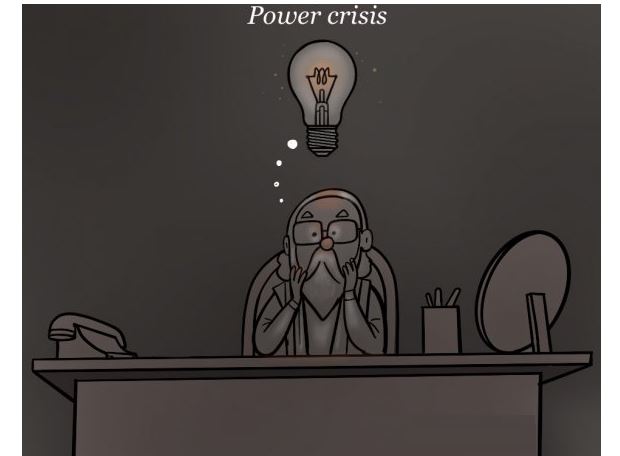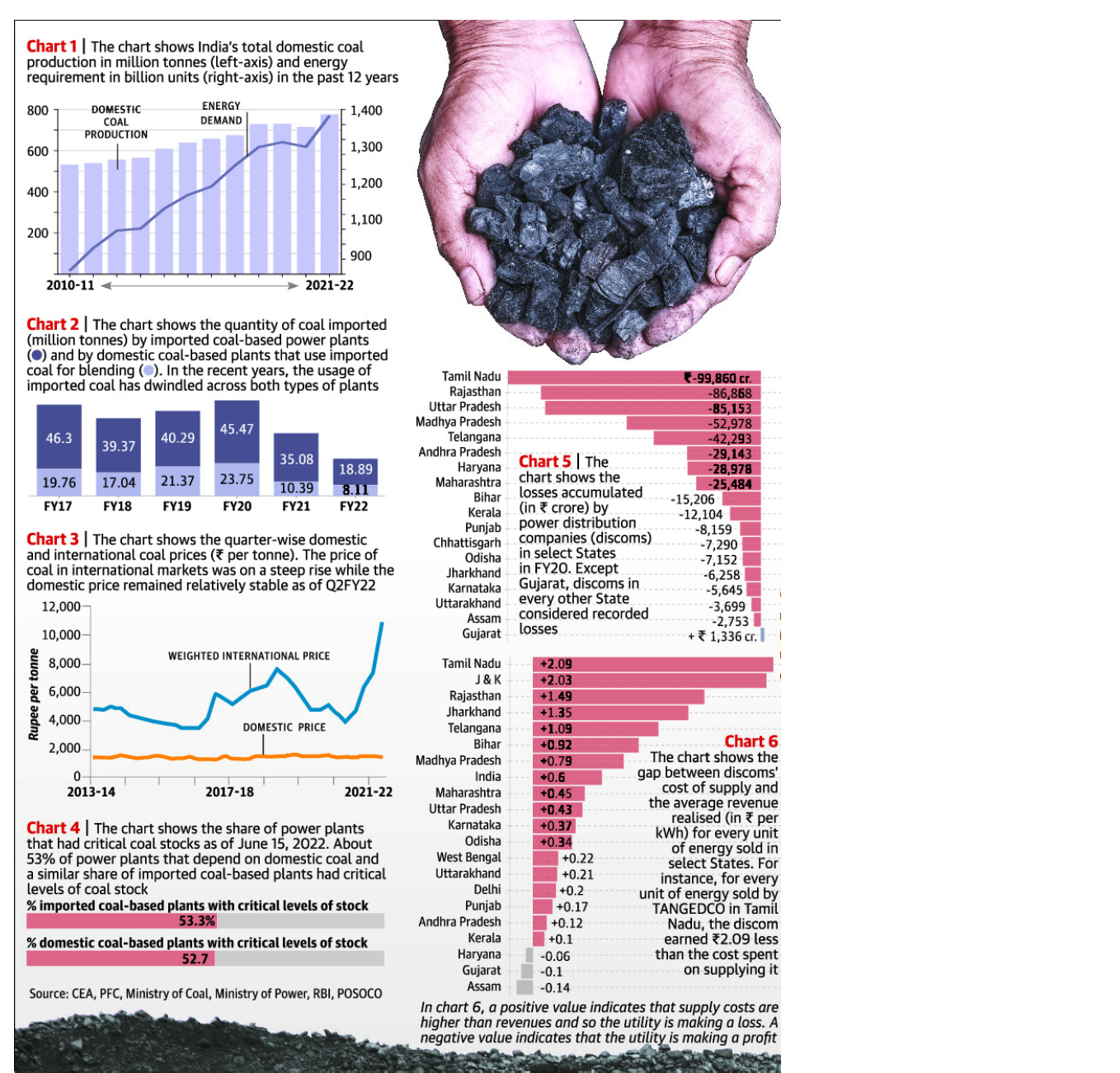Power Crisis in India – Current scenario and the root causes

With a coal supply-demand imbalance and rising international coal prices, cash-strapped thermal power generators are left holding critical stocks.

This topic of “Power Crisis in India – Current scenario and the root causes” is important from the perspective of the UPSC IAS Examination, which falls under General Studies Portion.
The present scenario in India’s power demand
- India’s power demand reached a record high of 211 MW recently in June, despite the fact that coal stocks were only available for eight days.
- To bridge the gap between a lack of domestic supply and rising demand, power-generating companies, or “gencos,” were ordered to use imported coal for 10% of their needs, or face having their domestic supplies cut.
Why does India experience a recurring power crisis?
- India is the world’s second-largest coal producer, with reserves that could last up to 100 years. Despite that, year after year, the shortage of coal supplies continues to be an issue.
- Domestic coal production slowed between FY18 and FY21 but resumed in FY22. Power demand has also increased as a result of the economic recovery and hotter weather conditions.
- Despite efforts to increase domestic coal supply, there is still a gap between the demand for coal and the supply of coal.
- Until FY20, domestic sources accounted for roughly 90% of coal receipts in the power sector, with imports filling the remainder. However, by FY22, the reliance on imports had dropped to 3.8 per cent, putting pressure on domestic supplies.
- Previous data show that importing coal for blending has always been unpopular.
- The majority of imports were made by power plants designed to burn imported coal. Notably, their share of imports fell by 60% in FY22 compared to FY17.
- The drop in imports can be attributed to the international markets’ skyrocketing coal prices.
- Imported coal costs nearly 5-6 times more than domestic supply.
- In this scenario, the Power Ministry requested that the gencos import coal. However, states are wary of using imported coal because it would significantly raise the cost of power.
- Power plants are in jeopardy due to a shortage of domestic supplies and rising import costs.
- As of mid-June, approximately 79 of the 150 plants that rely on domestic coal had critical stocks (25 per cent of the required stock). Eight import-based coal plants were also at risk.
Barriers that remain
- The use of imported coal will also raise the cost of power supply to power distribution companies, or ‘Discoms,’ which are frequently referred to as the weakest link in the power sector chain.
- Discoms owe the gencos long-standing debts totalling Rs.1.16 lakh crore.
- Payment delays by discoms cause a working capital crunch for generating companies, preventing them from procuring an adequate quantity of coal.
- According to the Power Finance Corporation’s 2019-20 report, discoms had accumulated losses of up to 5.07 lakh crore and were thus unable to pay generators on time.
- Discoms are losing money because their revenue is much lower than their costs.
- The difference between the average cost of supply and the average revenue realized demonstrates this.
- The largest disparities between discom revenues and expenses are found in Tamil Nadu, Jammu and Kashmir, and Rajasthan.
- Aside from providing power at lower rates, some state governments do not revise tariffs on a regular basis.
- Furthermore, the delay in receiving government compensation adds to the woes of cash-strapped discoms.
Practice Question for Mains
- Despite India being the world’s second-largest coal producer, with reserves that could last up to 100 years, the shortage of coal supplies continues to be an issue. Discuss. (15 Marks, 250 Words).
Referred Sources


